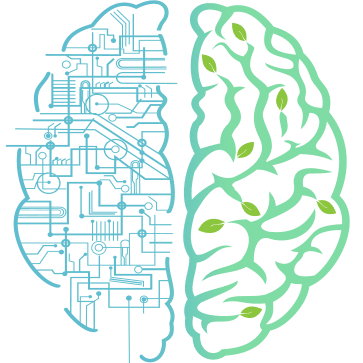Let the Senses Dance, Let the World Play
Have you ever noticed how the world feels different when you stop trying to control it? The way a breeze brushes against your skin, the way laughter carries through the air, the way the sunlight dances across a room. When you stop thinking so much—stop overanalyzing, stop getting lost in your head—life seems to unfold effortlessly.
Most of the time, though, we’re too caught up to notice. Our minds are running the show, constantly pulling us into the past or pushing us into the future. We replay embarrassing moments, worry about things that haven’t even happened yet, get lost in a never-ending mental to-do list. That’s the Default Mode Network (DMN) at work—the part of the brain responsible for mind-wandering and self-referential thinking. It’s why you can be in the middle of a conversation but completely miss what the other person just said. You weren’t there—you were off somewhere in your head.
But have you ever had a moment when that chatter disappears? Maybe you were staring at a campfire, watching the flames flicker, feeling the warmth on your skin, completely absorbed. Or maybe you were so caught up in dancing, running, playing music—so lost in the rhythm of the moment—that you forgot yourself entirely. That’s when the world stops feeling separate from you. There’s no observer, no thinker—just experience.
It turns out, the way we focus actually shapes our experience of reality. In quantum physics, there’s something called the observer effect—the idea that the mere act of observing something changes it. And in a way, our minds work the same way. If you focus on stress, the world feels more overwhelming. If you focus on what’s good, suddenly, good things seem to be everywhere. The brain isn’t just passively receiving the world—it’s actively creating it.
Rewiring the Mind Through Neuroplasticity
And here’s the best part: your brain isn’t set in stone. It can change. Neuroplasticity is the brain’s ability to rewire itself, to form new connections, to adapt. Every time you shift your focus, every time you break a habit, every time you step outside of autopilot, you’re reshaping your mind.
Think about it like this—if you’ve spent years reacting to stress the same way, your brain has built a well-worn path for that response. But the moment you start practicing presence, start shifting your perspective, start seeing thoughts for what they are—just thoughts—you begin to carve out a new path. The more you use it, the stronger it gets. The old pattern? It starts to fade.
Here’s how neuroplasticity plays out in real life:
- Breaking old habits – Ever notice how people who used to be negative can transform their outlook over time? A person who once defaulted to self-doubt can train their brain to lean toward confidence by repeatedly challenging those old thought patterns.
- Learning new skills – Remember how hard it was the first time you tried to drive a car? Now, you probably don’t even think about it. That’s neuroplasticity—your brain forming new pathways until a skill becomes second nature.
- Bouncing back from setbacks – Some people crumble after failure, while others see it as a stepping stone. Those who practice reframing their experiences—focusing on growth rather than defeat—literally rewire their brains to handle adversity better.
- Building gratitude – Ever met someone who always finds the silver lining? They weren’t born that way. The more you focus on what’s good, the more your brain gets used to spotting the good. Gratitude rewires the brain toward positivity.
And those thoughts that feel so real, so consuming? They’re not as solid as they seem. In psychology, there’s a concept called cognitive defusion, which is all about stepping back from your thoughts instead of getting tangled up in them. Instead of thinking, I’m a failure, you recognize it as just a thought—I’m having the thought that I’m a failure. That little shift? It creates distance. It loosens the grip.
Bringing It into Everyday Life
So, what’s the takeaway? Simple. The more you practice awareness, the easier it becomes. The more you engage your senses, the richer life feels. The more you shift your focus, the more the world around you shifts.
Try this:
- Pause and take in your surroundings – Right now, what do you hear? What do you feel? What scents are in the air? Engaging your senses pulls you out of autopilot.
- Step outside of thought loops – Next time your mind spirals, say, “I’m just noticing this thought,” rather than getting caught up in it.
- Give your brain something new to do – Learn a new skill, take a different route to work, or switch up your routine. Novel experiences strengthen neuroplasticity.
- Start small with gratitude – Each night, think of three good things that happened during the day. It rewires your brain to look for more.
Maybe today, just for a moment, try it. Listen—not just hear, but really listen—to the world around you. Feel—not just touch, but really feel—the air on your skin, the weight of your body, the warmth of your breath. Step outside of your thoughts and into the experience.
Let the senses dance. Let the world play. And let yourself be part of it.






